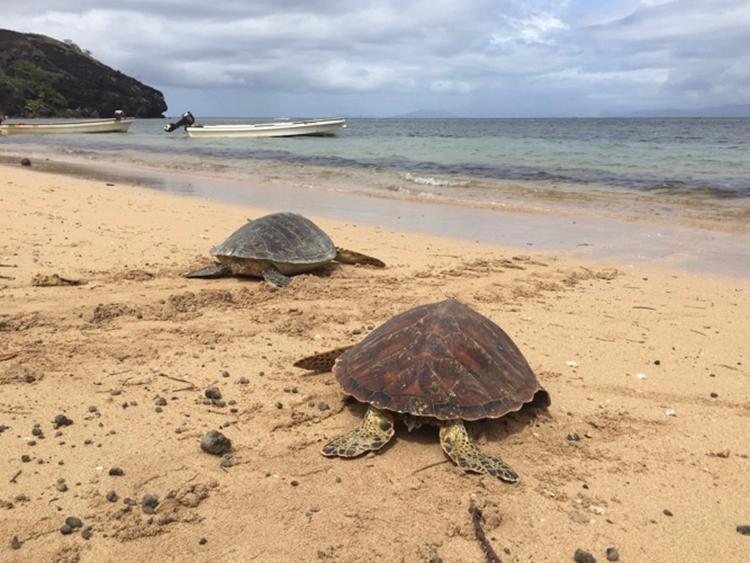Maria Alejandra Camargo Vargas
This work will shed light on the damage mechanisms of tropical cyclones to coastal ecosystems. The project is aimed at understanding how the loss of mangrove affects its dynamics and functions in the long-term, and the scale of effect on the ecological services these ecosystems provide to adjacent seagrass beds and threatened species such as the green turtle (Chelonia mydas). This will be observed by quantifying the availability of dissolved inorganic nutrients (Nitrogen and Phosphorous) in sediments from mangroves and seagrass beds occurring in close proximity, as well as chemically characterizing their organic matter. This will be related to the organic matter present in feces from green turtles feeding at two foraging grounds on Makogai and Yadua Islands in Fiji.

Oceanic islands in the western south Pacific are quite susceptible to the occurrence of extremely destructive tropical cyclones. Such is the case of Fiji and Cyclone Winston (CW) (Category 5), which struck the country in 2016. From the total mangrove coverage in Fiji, 67% was distributed within a 50-km radius of the CW’path, resulting as one of the major affected ecosystems from this event. Massive mangrove losses can alter crucial ecological functions both in the short and long term and depending on the geomorphological and environmental settings where they occur, negative cascade effects on adjacent ecosystems may be triggered due to existent biological and chemical links controlling the dynamics of these systems.
Seagrass beds occurring in shallow waters from two Fijian islands –Yadua and Makogai– both located nearby fringe mangrove forests, have been identified as important foraging grounds for the endangered green turtle (Chelonia mydas) within the South Pacific Ocean region. CW greatly destroyed the mangrove in Makogai, however, Yadua still maintains intact mangrove fringes. By comparing these islands, this project will assess how the loss of mangrove forest influences on adjacent seagrass beds, and to what extend this is translated into the nutrition of green turtles obtaining their major dietary source from grazing on such seagrass blades. This will be observed by means of the sediment dynamics that drive the distribution and storage of nutrients and organic matter and are controlled by biogeochemical processes where both mangrove and seagrass ecosystems are involved.
The effect of the presence/absence of mangroves will be measured by estimating the availability of dissolved inorganic nutrients (phosphorus and nitrogen) in soil and sediments from the hinterland of mangroves, mangrove forests and adjacent seagrass beds, and by chemically characterizing their organic matter using the pyrolysis-gas chromatography/mass spectrometry (Py-GC/MS) technique. The latter will also be applied for analysing the organic matter in feces from green turtles foraging at each island, which will allow to explore the potential variability due to their feeding under different environments. Additionally, parameters such as turbidity, epiphytes coverage, chlorophyll a concentration and dissolved inorganic nutrients in the water column will be estimated as indicators of the state of the seagrass beds on Makogai and Yadua Islands. This will provide valuable insights to formulate proper rehabilitation strategies, since no intervention plan has taken place on Makogai Island after CW to restore the lost mangrove forest and its ecological functions which seagrass and green turtles benefit from.